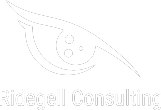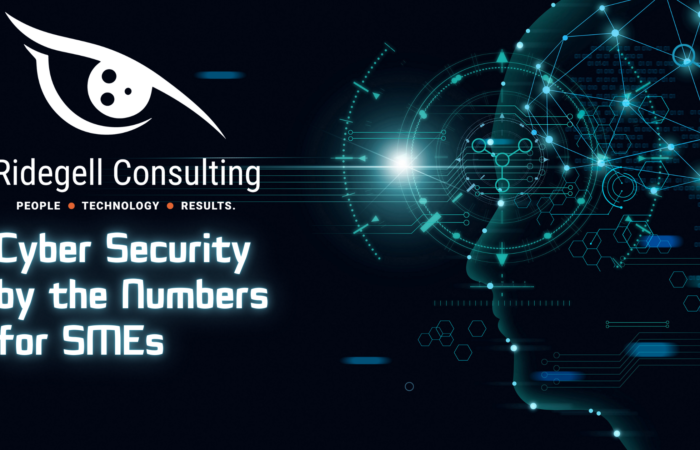
Estimated reading time: 5 minutes
Cybercrime is a growing threat in Canada, affecting individuals, businesses, and entire industries. With the rise of online fraud, identity theft, ransomware, and data breaches, cybercriminals are evolving faster than ever, leading to significant financial losses, operational disruptions, and personal harm.
In fact, the Canadian Centre for Cyber Security has identified cybercrime as the largest cyber threat currently facing Canadians. Take a look at our blog: Cybersecurity by the Numbers for SMEs.
As more people and devices connect to the Internet, the “attack surface” expands, creating more potential points for cyber attackers to exploit. Cybercriminals are constantly adapting their tactics and using modern technologies to achieve financial, geopolitical, or ideological goals.
What Is an Attack Surface?
An attack surface refers to all the possible points where an unauthorized user (attacker) can try to enter a system.
Attack surfaces includes:

- Devices: Mobile phones, computers, servers, IoT devices
- Networks: Wireless networks, VPNs, cloud services, internal and external networks
- Software: Operating systems, apps, databases
- Data: Information that is stored, transmitted, or processed
- People: Anyone with access to your systems
The more connected your environment, the more opportunities cybercriminals have to launch attacks.
Cybercrime Is More Accessible Than Ever
Today, a thriving black market for cybercrime tools and services exists on online forums and private marketplaces. Cybercriminals no longer need advanced technical skills to target you.
Two growing trends are:
- Malware as a Service (MaaS)
- Ransomware as a Service (RaaS)
These models offer easy-to-use cyberattack kits, often complete with customer support. The barrier to entry is low, enabling even inexperienced hackers to cause significant damage.
Common Tools in MaaS and RaaS Kits:
- Malware: Software designed to harm, exploit, or compromise systems
- Ransomware: Malware that encrypts files and demands payment to restore access
- Web Defacement Tools: Scripts that alter website content without authorization
- Initial Network Access Tools: Methods attackers use to infiltrate networks
- Distributed Denial of Service (DDoS): Overwhelming a network with traffic until it crashes
Understanding Ransomware as a Service (RaaS)
Ransomware groups typically develop ransomware variants and distribute them to affiliates who launch attacks. In exchange, they receive:
- Upfront payments
- Subscription fees
- A share of any ransom collected
- RaaS is responsible for most ransomware attacks affecting Canadian businesses today.
Related Read: The Three Most Dangerous Ransomware Groups
Understanding Malware as a Service (MaaS)
MaaS providers offer malware kits on a subscription or pay-per-use basis, often including trojans, botnets, spyware, and other attack tools. They also maintain, update, and distribute these malicious programs for their “customers” to use in attacks like:
- Data theft
- DDoS attacks
- System exploitation
Cybercrime Threats to Small and Medium Enterprises (SMEs)
SMEs in Canada are facing growing cyber risks, especially when relying on Managed Service Providers (MSPs) for IT support.
Key risks include:
- MSP Targeting: Cybercriminals infiltrate MSPs to access multiple client networks at once.
- Supply Chain Attacks: Hackers compromise vendors and service providers to reach their ultimate targets.
- Unpatched Systems: SMEs often lack dedicated cybersecurity resources, leaving vulnerabilities open.
- Stolen Data: Breached data fuels further crimes like ransomware attacks and identity theft.
- Cryptocurrency and Encryption: These tools make it harder for law enforcement to track criminals.
The reality? SMEs are highly attractive targets because of their smaller cybersecurity budgets and weaker defenses.
How to Protect Yourself and Your Business against Cybercrime
Proactive cybersecurity measures are essential. To minimize vulnerabilities:
- Continuously monitor systems and networks
- Regularly update software and patch vulnerabilities
- Implement strict access controls and authentication processes
- Educate employees about cyber threats and phishing attacks
- Vet MSPs and cloud vendors for strong security practices
- Prepare for supply chain risks with layered security strategies
Tip: Start with a Cyber Assessment offered by Ridegell Consulting Inc. We assess your current cybersecurity posture and human firewall, then provide tailored recommendations to enhance the safety of your existing infrastructure and practices.
Stay Vigilant Against Cybercrime
Cybercriminals evolve alongside new technologies. If you feel confident in your current cybersecurity protections, look again. Threats are lurking everywhere, and constant vigilance is non-negotiable.
Cybercrime against Canadians will continue to grow unless organizations and individuals alike take strong, proactive steps to defend their digital lives.
Need help protecting your business?
Ridegell Consulting specializes in cybersecurity assessments, process improvement, and risk management. Contact us today to learn how we can help safeguard your future.
Frequently Asked Questions
What is the biggest cyber threat to Canadians?
According to the Canadian Centre for Cyber Security, cybercrime is currently the largest cyber threat affecting Canadians, including ransomware attacks, identity theft, and online fraud.
How can individuals protect themselves from cybercrime?
Individuals can protect themselves by updating software regularly, using strong passwords, enabling two-factor authentication, being cautious with emails and links, and securing home networks.
Why are small businesses targeted by cybercriminals?
Small businesses often have fewer cybersecurity resources, making them attractive targets for cybercriminals looking for easier access points or broader attacks through supply chains.








